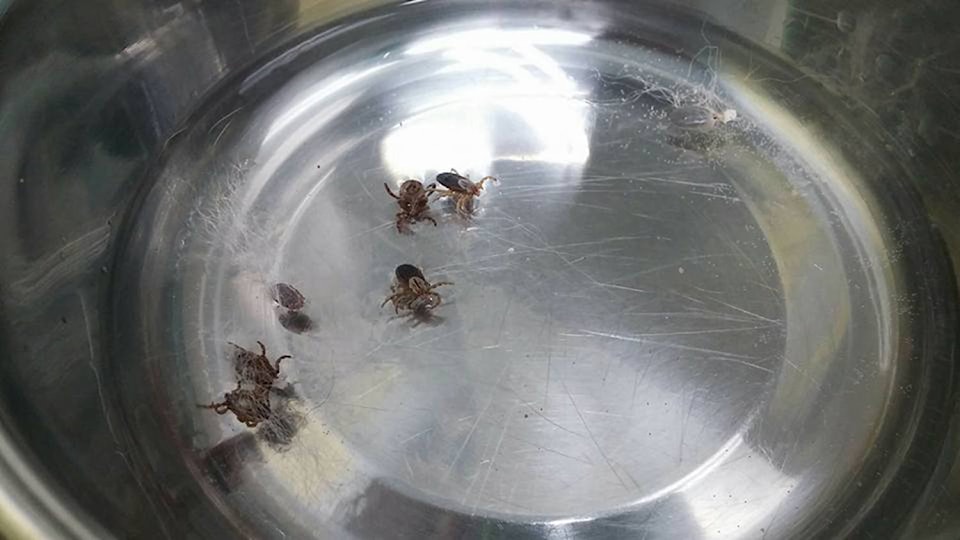Central Alberta is entering tick season amid reports that the Lyme Disease-carrying parasites are flourishing.
A University of Alberta biologist found that 10 to 20 per cent of black-legged ticks (also known as deer ticks) carry the bacteria that can cause Lyme disease.
While these blood-sucking arachnids were once thought rare in the province, found only in mountainous or remote areas, entomologist Janice Sperling said more ticks are turning up in cities, probably carried on the backs of deer or birds.
“We need to recognize that we have a problem that is getting bigger, not smaller,” said Sperling on the science website www.folio.ca.
This warning lines up with the findings of the Central Alberta Lyme Society, which is hearing of more local tick encounters, both human and animal.
Echo Armstrong, the group’s founder who’s still coping with effects of the Lyme disease she contracted 13 years ago, has heard local veterinarians are finding ticks on pets this spring even though Central Alberta had an extended cold snap last winter.
Perhaps the parasites benefitted from the body warmth of their hosts, suggested Armstrong who believes they survived the cold better than pine beetles.
As an outdoor enthusiast and hunter, she spends a lot of time in the bush. But she said even people who stay in the city are reporting tick sightings on trails, in yards — or in one case, even a fourth floor balcony.
According to the provincial government’s tick surveillance program, which invites Albertans to bringing in ticks they have found to health centres, counts of the parasites have tripled since the program was started in 2013.
Alberta Health’s deputy medical officer of health Kristin Klein isn’t sure if this is because bug populations are growing or because more people are becoming familiar with the program and are sending more tick samples in.
Various kinds of the parasites can carry different bacteria and diseases, beyond Lyme, said Klein. And these can effect people in different ways — from having a negligible reaction to a life threatening illness.
“It’s an evolving field,” added Klein, who urges Albertans to get more informed about the program and how to remove ticks by visiting www.alberta.ca/lyme-disease-tick-surveillance.aspx.
Armstrong isn’t sure why Alberta’s ticks populations are thriving. It could be the warming climate, she said, “I don’t know. But nature doesn’t stay put.
“Nature changes all the time” — and central Albertans should be using bug repellent when outdoors, and check themselves and their pets over when back home, she added.
Central Alberta Lyme Society offers a support group on the last Thursday of the month from 6:30 to 8:30 p.m. at the Red Deer museum.
lmichelin@reddeeradvocate.com
Like us on Facebook and follow us on Twitter
